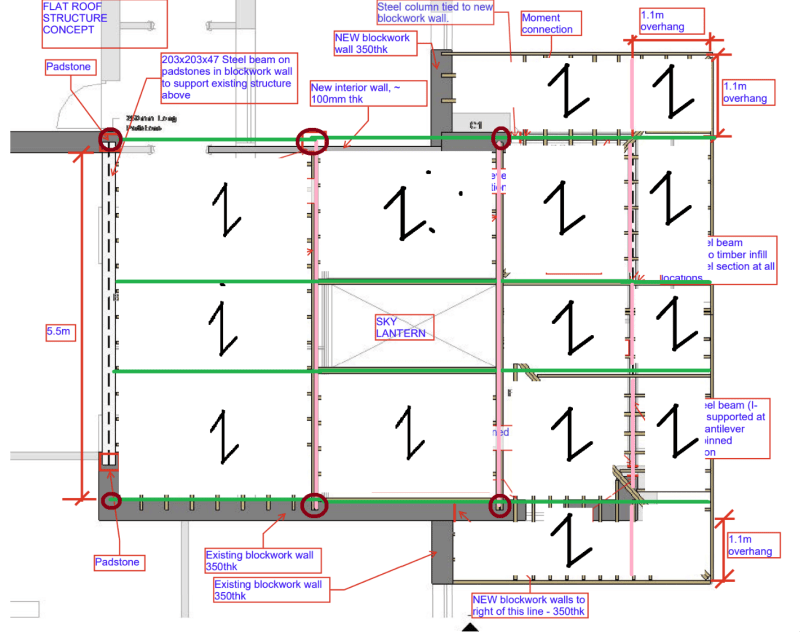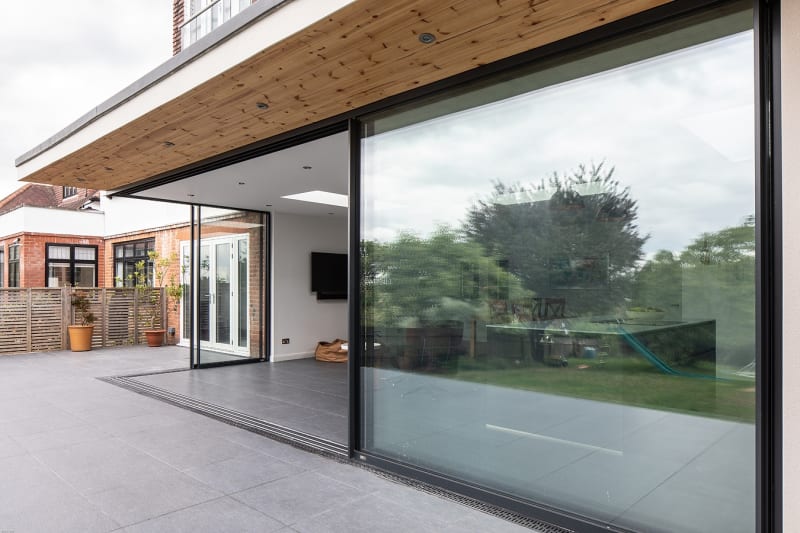Not a permanent works engineer and do not specialise in home builds (I do temporary works for medium/large commercial/resi structures, mainly in RC).
This is a single storey house extension in the UK that I'm doing a rough conceptual design for, for a friend. Mainly to assess feasibility and rough costs. Attached is the flat roof structure in question. Sizing of beams/columns will be done later.
Over designed? under designed? Potentially unstable? Give me all you've got. Insult me if you have to. Community feedback will be helpful. Thanks
This is a single storey house extension in the UK that I'm doing a rough conceptual design for, for a friend. Mainly to assess feasibility and rough costs. Attached is the flat roof structure in question. Sizing of beams/columns will be done later.
Over designed? under designed? Potentially unstable? Give me all you've got. Insult me if you have to. Community feedback will be helpful. Thanks


